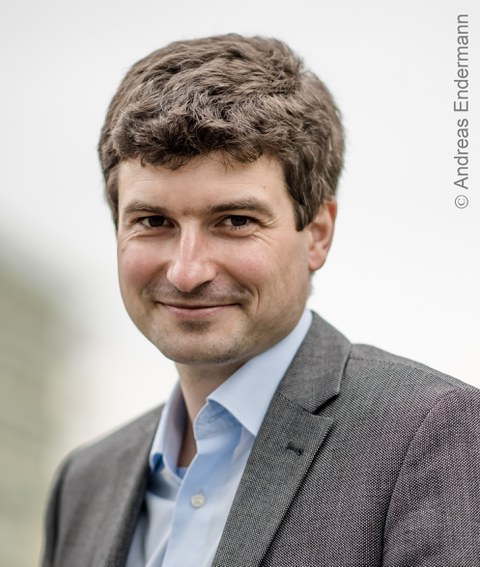Optimization approaches for robust and durable reinforced concrete and fibre concrete structures under consideration of scale bridging polymorphic uncertainty modelling
Abstract of the planned project content, taking into account the results from the first project phase
The overarching objective of this project is the development of computational reliability and optimization methods for the lifetime-oriented design of reinforced and steel fibre concrete structures, which allow to follow the influence of polymorphic uncertainties throughout the life of the structure. Interacting loading and environmentally induced deterioration processes and the propagation of uncertainties through multiple spatial and temporal scales are accounted for by scale bridging models in conjunction with physically sound models for reinforced and fibre reinforced concrete and multifield structural analysis.
For this purpose, the sub-modeling strategy developed in the 1st funding phase will be extended in the 2nd phase to a hydro-mechanical coupled model, in order to record the influence of deterioration processes by multiscale models in conjunction with physically sound durability models. Furthermore, the aim is to quantify the uncertainties resulting from the fibre orientation by means of a number of simulations of the casting process and subsequently to generate statistical data for the fibre concrete structure, which is based on efficient substitute models.

a) Input parameter of a fuzzy random field (exemplified Young's modulus quantified as stochastic distribution with anisotropic fuzzy correlation parameters); b) Realization of the fuzzy random field; c) Combination of a convolutional neural network (CNN) and a recurrent neural network (RNN) to predict time variant fuzzy stochastic structural processes
Optimization algorithms for time variant polymorphic uncertain a priori and design parameters will be developed using particle swarm optimization. Time variant design parameters lead to high dimensional design spaces. In order to reduce the dimension of the optimization problem, approaches will be investigated, where the optimization problem is split into several interacting subproblems, which are solved sequentially or in parallel. This means that the objective function and the constraints of the subproblems are changing during the optimization. An important issue will be the investigation of the sensitivity of different surrogate measures of the polymorphic uncertain objective function w.r.t. the optimal design. Beside time variant parameters, spatial correlated stochastic distributed input material parameters, which can be quantified as random fields, will be considered. Because of the high input space resulting from the random fields, convolutional neural networks will be used to map the input random fields onto the quantity of interest.
To combine time variant polymorphic uncertain a priori and design parameter and spatial correlated stochastic distributed material parameters, convolutional neural networks and recurrent neural networks are combined.

a) Two stages of the computational simulation of the casting process; b) Illustration of the spatial distributon of the fibre orientation tensor as ellipsoids and histograms at two selected locations from multiple realizations
The developed numerical models for reinforced concrete and fibre reinforced concrete and the methods for uncertainty quantification and optimization are applied to optimize the life time of a prestressed concrete bridge strengthened by a fibre reinforced concrete layer.
Essential project goals and objectives
- How do uncertainties at the material scale (fibre distribution, crack roughness, steel-concrete bond properties) and human induced imprecisions (e.g. position of reinforcement) propagate through spatial and temporal scales and affect the structural reliability?
- Can simulations of the casting process help reducing uncertainties in the design of fibre reinforced concrete structures?
- How does the concrete and reinforcement design (fibres vs. conventional reinforcement and hybrid designs) and the associated levels of uncertainty affect the durability and lifetime of a structure?
- Is it possible to determine the concrete cover size for an optimized durability oriented design, considering uncertain interactions between reinforcement design, cracking, and the ingress of corrosive substances?
- How does a (retrofitting) design of a prestressed concrete structure, using high performance fibre reinforced concrete materials and considering polymorphic uncertainty, affect the fatigue performance and, consequently, the expected lifetime of the structure?

M.Sc. Roskosch
M.Sc. Stefanie Schoen
Ruhr-Universität Bochum
Lehrstuhl für Statik und Dynamik

M.Sc. Edler
M.Sc. Philipp Edler
Ruhr-Universität Bochum
Lehrstuhl für Statik und Dynamik
-
Freitag, S.; Edler, P.; Kremer, K.; Meschke, G.:
Multilevel surrogate modeling approach for optimization problems with polymorphic uncertain parameters.
International Journal of Approximate Reasoning, 119, 2020, pp. 81 – 91, Link
-
Freitag, S.; Kremer, K.; Edler, P.; Hofmann, M.; Meschke, G.:
Structural Reliability and Durability Assessment of Reinforced Concrete Structures.
In: Beer, M.; Zio, E. (eds.), Proceedings of the 29th European Safety and Reliability Conference (ESREL 2019), Hannover, Germany, 2019, Research Publishing, Singapore, 2019, pp. 2229 - 2236 Link
-
Freitag, S.; Edler, P.; Kremer, K.; Hofmann, M.; Meschke, G.:
Optimization of structures under consideration of polymorphic uncertain parameters.
In: 5th International Conference on Soft Computing and Optimization in Civil, Structural and Environmental Engineering (CIVIL-COMP-OPTI 2019), Riva Del Garda, Italy, 2019
-
Kremer, K.; Edler, P.; Freitag, S.; Meschke, G.:
Sub-Modeling Approach to Investigate the Cracking Behavior of Reinforced Concrete Structures Considering Polymorphic Uncertainty.
In: Proceedings of the ECCOMAS Thematic Conference – Computational Methods in Multi-Scale, Multi-Uncertainty and Multi-Physics Problems (CM4P), Porto, Portugal, 2019, pp. 27 – 28
-
Edler, P.; Freitag, S.; Kremer, K.; Hofmann, M.; Meschke, G.:
Optimization of reinforced concrete structures under consideration of scale bridging uncertainties.
In 3rd ECCOMAS Thematic Conference on Uncertainty Quantification in Computational Sciences and Engineering (UNCECOMP 2019), Crete, Greece, 2019
-
Edler, P.; Freitag, S.; Kremer, K.; Meschke, G.
Optimization Approaches for the Numerical Design of Structures under Consideration of Polymorphic Uncertain Data. ASCE-ASME Journal of Risk and Uncertainty in Engineering Systems, Part B: Mechanical Engineering, 2019, 5 (4), 2019, 041013 Link
-
Mäck, M.; Caylak, I.; Edler, P.; Freitag, S. Hanss, M.; Mahnken, R.; Meschke, G.; Penner, E.:
Optimization with constraints considering polymorphic uncertainties.
Surveys for Applied Mathematics and Mechanics (GAMM-Mitteilungen), 2019, Link
-
Kremer, K.; Edler, P.; Miska, N.; Leichsenring, F.; Balzani, D.; Freitag, S.; Graf, W.; Kaliske, M.; Meschke, G.:
Modeling of structures with polymorphic uncertainties at different length scales.
Surveys for Applied Mathematics and Mechanics (GAMM-Mitteilungen), 2019, Link -
Freitag, S.:
Statische Berechnungen mit polymorph unscharfen Daten.
In: Freitag, S.; Geierhos, M.; Asmani, R.; Haug, J.I. (Hrsg.), Unschärfe – Der Umgang mit fehlender Eindeutigkeit. Nordrhein-Westfälische Akademie der Wissenschaften und der Künste – Junges Kolleg, Verlag Ferdinand Schöningh, 2018, S. 129 – 141
-
Freitag, S.; Edler, P.; Kremer, K.; Hofmann, M.; Meschke, G.:
Optimization Approaches for Durable Reinforced Concrete Structures considering Interval and Stochastic Parameter Uncertainty.
Proceedings in Applied Mathematics and Mechanics, 18 (1), 2018, pp. 1 – 4, Link
-
Kremer, K.; Edler, P.; Freitag, S.; Hofmann, M.; Meschke, G.:
Numerical durability simulation of reinforced concrete structures under consideration of polymorphic uncertain data.
In: Caspeele, R.; Taerwe, L.; Frangopol, D.M (eds.), Life-Cycle Analysis and Assessment in Civil Engineering: Towards an Integrated Vision, Proceedings of the Sixth International Symposium on Life-Cycle Civil Engineering (IALCCE 2018), Ghent, Taylor & Francis, London, 2018, pp. 1089 – 1096 -
Kremer, K.; Edler, P.; Freitag, S.; Hofmann, M.; Meschke, G.:
Multiscale Deterioration Modelling of Reinforced Concrete Structures considering Polymorphic Uncertainties
In: Schlangen, E.; de Schutter, G.; Šavija, B.; Zhang, H.; Romero Rodriguez, C. (eds.), Proceedings of the Symposium on Concrete Modelling - CONMOD2018, 72th RILEM-week, TU Delft, 2018, pp. 281 – 284 -
Freitag, S.; Muhanna, R.L.; Mullen, R.L. (eds.)
Special Issue on: Computing with Polymorphic Uncertain Data
International Journal of Reliability and Safety, 12 (1/2), 2018, Link -
Edler, P.; Freitag, S.; Kremer, K.; Meschke, G.
Optimization of Durability Performance of Reinforced Concrete Structures under Consideration of Polymorphic Uncertain Data
In: Proceedings of the joint ICVRAM ISUMA UNCERTAINTIES conference, Florianópolis, 2018, pp. 1 – 19 -
Freitag, S.; Edler, P.; Kremer, K.; Meschke, G.
Surrogate modelling for solving optimization problems with polymorphic uncertain data
In: Proceedings of the 8th International Workshop on Reliable Engineering Computing (REC 2018), Liverpool, 2018, pp. 31 – 39 -
Freitag, S.; Edler, P.; Kremer, K.; Meschke, G.
Optimization with Polymorphic Uncertainty Models for the Design of Durable Reinforced Concrete Structures
In: Proceedings of the 13th World Congress on Computational Mechanics (WCCM 2018), New York, 2018
- Freitag, S.; Kremer, K.; Hofmann, M.; Meschke, G.
Numerical Design of Reinforced Concrete Structures under Polymorphic Uncertain Conditions.
In: Bucher, C.; Ellingwood, B.R.; Frangopol, D.M. (eds.), Safety, Reliability, Risk, Resilience and Sustainability of Structures and Infrastructure, Proceedings of the 12th International Conference on Structural Safety and Reliability (ICOSSAR 2017), Vienna, 2017, pp. 1535 – 1542 - Kremer, K.; Freitag, S.; Hofmann, M.; Meschke, G.
Deterioration of Reinforced Concrete Structures under consideration of Polymorphic Multiscale Uncertainty Modelling
In: Papadrakakis, M.; Papadopoulos, V.; Stefanou, G. (eds.), Proceedings of the 2nd ECCOMAS Thematic Conference on Uncertainty Quantification in Computational Sciences and Engineering (UNCECOMP 2017), Rhodes Island, 2017


